The Welsh terrier, also known as just Welsh or Welshie, is one of the oldest terrier breeds. Originally bred to hunt badgers, foxes, vermin, and other small animals, they retain their classic terrier spunk with a strong prey drive.
This incredible breed is full of character and very high in energy. Welsh terriers are strong-willed, independent dogs- not very keen on pleasing their owners. However, they are affectionate with family and never get tired of playing.
Their distinct brick-shaped head appears as a rectangle with a prominent muzzle, almost like a beard. They can be distinguished by their black and tan wiry coat that is easy to maintain with regular care.
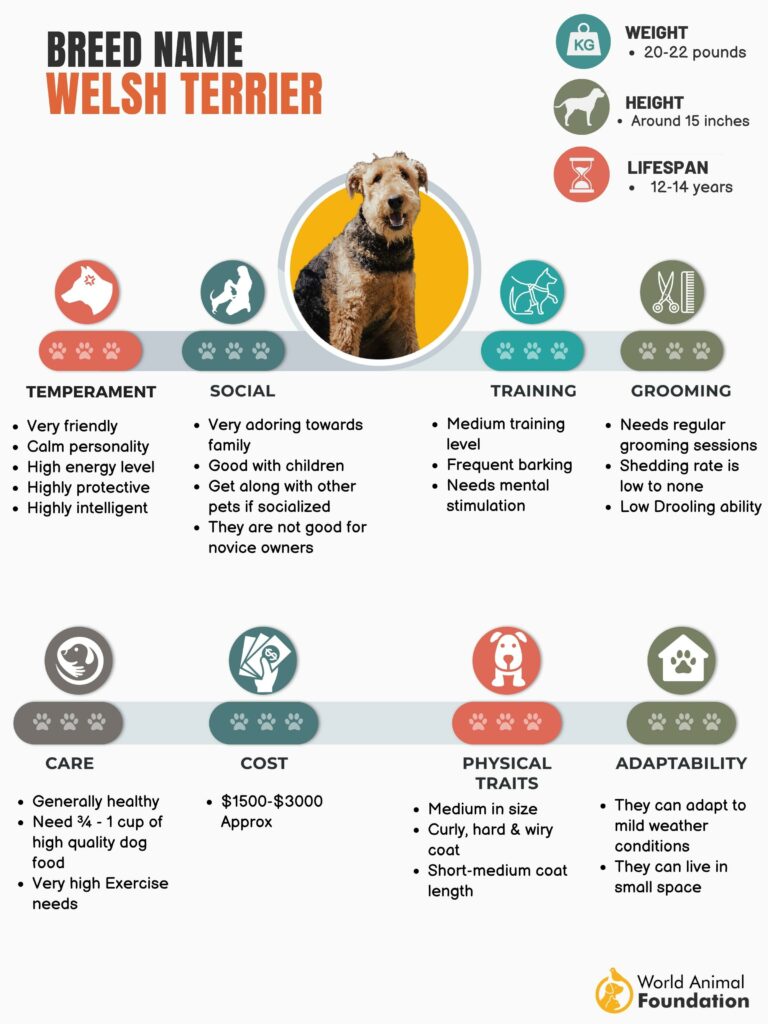
About the Breed
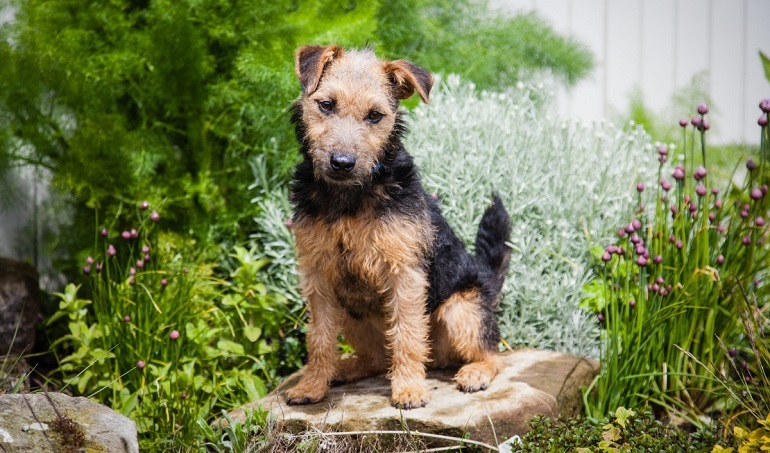
The Welsh terrier dog breed originated in Wales. They were bred to help farmers in keeping their property clear of foxes, vermin, and badgers. They were able to dig down the burrows to hunt badgers out of the ground. However, these characteristics are not needed anymore by modern-day farmers.
Welsh terriers are now considered rare dogs and are mainly bred by enthusiasts for dog shows and competitions. They are small to medium-sized dogs with strong personalities. They are always alert and active. It is very uncommon to see a welsh terrier lying about or relaxing in the backyard.
As they are high-energy dogs, they always need something to do. Their high exercise needs make them suitable for homes with large fenced yards. They need hours of high-energy playtime and mental stimulation.
Keeping them inside the house or in a small apartment would not be a great idea. They love climbing and would take any opportunity they get to climb on tables, sofas, and shelves. Knocking off household items is also highly anticipated. Watch out!
It is better to have a few games planned out to play with them each day. If they are not given constant mental stimulation, they can indulge in bad habits such as chewing on the furniture.
Also, welsh terriers bark a lot. So, if you live in a quiet neighborhood, we would suggest you pass on the idea and look for a quieter dog breed, such as the adorable Cavapoo.
Known for their free spirits, these dogs can be difficult to train. Training welsh terriers requires a lot of patience and consistency. As they don’t care about pleasing, getting them to follow instructions requires expert training from an early age.
They are great with children as they love to play. Older children usually have a better time with them, whereas interactions with toddlers and babies should only happen in presence of an adult. Their assertive personalities make them unpredictable sometimes.
To get along with other dogs, they need early socialization and constant positive interaction. They may get agile and aggressive if they are not trained well.
History of the Welsh Terrier
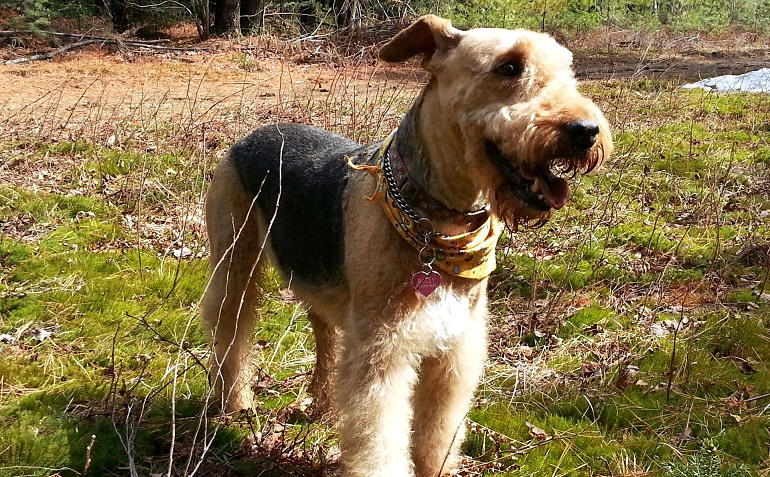
Although the exact time of the welsh terrier dog breed is unknown, they are considered the oldest terrier breed. Many experts agree that these purebred dogs originated in the late 1790s to early 1800s.
Manuscripts and illustrations from the 15th century also have a description of Welsh terrier dogs. Early on, they were known as black and tan wired hair terrier breeds.
In the early 1800s, farmers in mountainous regions of Wales had already started breeding them to hunt out vermin, foxes, and badgers from their farms. Their tough personality and ability to dig made them excellent for the job.
At first, welshies were termed as the Old English terrier breed, along with several other terrier breeds. They were recognized as the Welsh terrier dog breed by the Kennel Club of England in 1887.
Around the same time, in the year 1885, the breed started arriving in America. The Welsh terrier was recognized as a breed by the American kennel club in the year 1888. Eventually, the welsh terrier club was founded in the year 1900. Although still rare, its popularity has been increasing ever since.
Welsh Terrier Facts

- Welsh terriers are medium-sized, long-legged terriers that are larger than Lakeland terrier breeds but smaller than Airedale terriers.
- Because of their strong, independent personalities, training them can be a challenge. They require a proper training program, hence expert dog owners do better with them.
- Welsh terriers are not suitable for novice dog owners. They have high energy and have more exercise requirements than other dogs. You also need a lot of patience and perseverance to keep up with this high-spirited puppy.
- The Welsh terrier dog breed is an excellent choice for people prone to allergies. Their thick and wiry double coats do not shed much, hence considered hypo-allergenic.
- These dogs don’t do well as lap dogs. They are very affectionate and loving, but their way to engage with you is through play. They would love to play fetch but won’t be eager for your approval. This hyper-independent nature gives them a keen look on their face, always ready for mischief.
- They do best in a house with a fenced yard. Living in an apartment with your welshie may get chaotic for you. They need space to channel all that energy out.
- The welsh terrier loves digging. You would need a yard space dedicated to him, preferably with mud piles. Fun tip; hide their favorite toy in mud and watch him dig to his heart’s content.
- Never let them loose without a leash in an open space. They have inquisitive personalities and love sniffing around for prey. It might be a problem if they see small pets or animals around.
Facts at a Glance
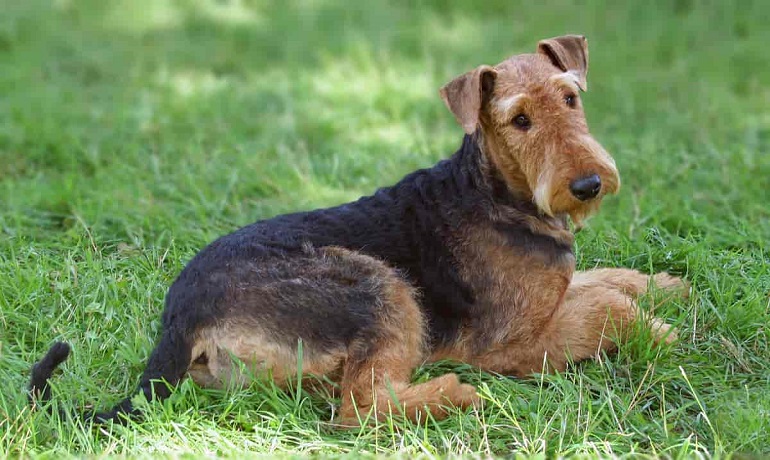
- Group: Terrier Group
- Origin: Mountainous regions of Wales, England
- Size: Small to medium, about 15 inches at the shoulder
- Weight: Approximately 20 pounds
- Color: Black and tan
- Coat: Curly hair, wiry double coats, waterproof
- Temperament: Friendly, intelligent, stubborn, dominant, easily distracted
- Shedding: low to non
- Hypoallergenic: Yes
- Exercise needs: Very High
- Energy Level: Very High
- Suitable for houses with smaller pets: No
Welsh Terrier Appearance
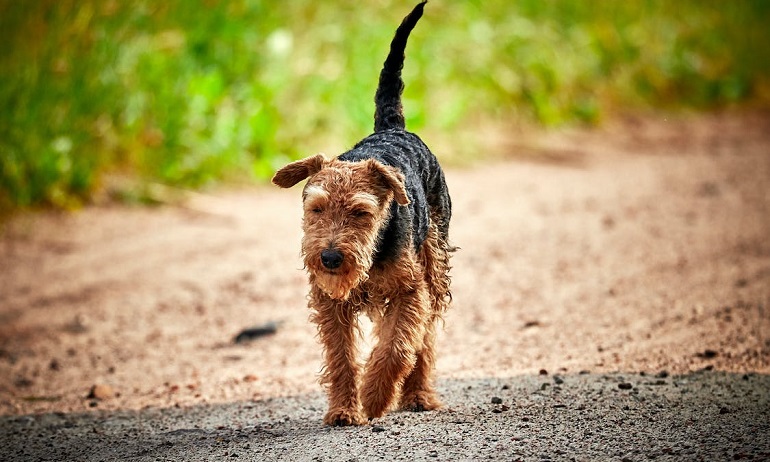
Welsh terriers are medium-sized dogs, a little small but bigger than the Lakeland terrier breed. They have rectangular faces with folded ears and jaunty beards. They all look similar to the lines of classic long-legged English terrier groups. Welsh terriers have a sturdy and compact build with a stunning coat.
Size:
Welsh terrier is 15 inches tall at the shoulder. Males are bigger than females in body proportions.
Weight:
An adult dog typically weighs around 20pounds. Females are proportionally smaller than males and weigh less.
Coat:
They have double coats. The soft undercoat is shorter, whereas the wiry outer coat is long and compact. It gives weatherproof characteristics to the dog.
Color:
Welsh terriers have only one color pattern; black and tan. Welsh terrier puppies have an all-black coat when they are born. When they grow up, the extremities and belly get a tan color, and the black patch appears as a saddle on top of the body.
Welsh Terrier Temperament and Personality
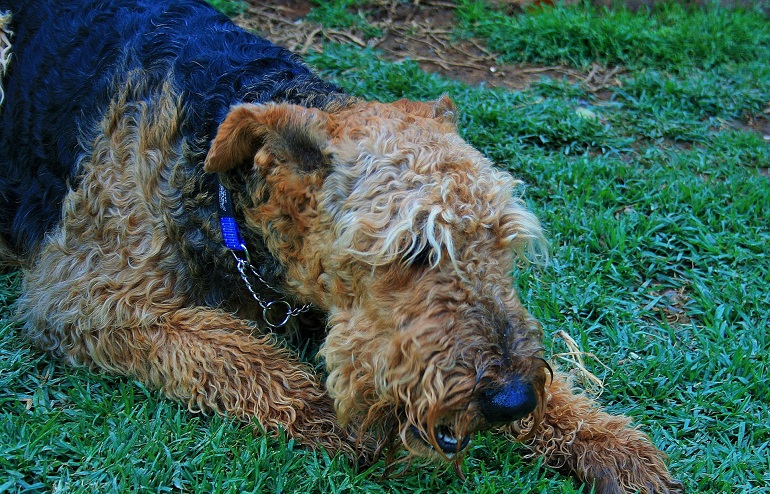
Welsh terriers are the calmest among the many terrier breeds of the terrier group. These high-energy and self-sufficient dogs do not strive for praise. Like many terriers, they have a high prey drive and they are always alert.
Their friendly nature makes them a great choice for pets. But owners report that they are not devoted to one owner only. They get along well with anyone that offers them treats and quality playtime. They never try to please and are bosses themselves.
The Welsh terrier dog breed is also suitable for homes with older children. Children and teenagers are usually high in energy and love running around. For this reason, welsh terrier dogs enjoy their time with kids.
However, they should not be left around babies and toddlers. Due to their independent and assertive nature, they are unlikely to understand baby behavior.
You will never see a welsh terrier rolled up in the lap or relaxing in a warm bed during the daytime. They are always on their toes, looking for a new activity or possible prey. They truly brighten up the house, and there is never a dull moment with them around.
Welsh terriers are intelligent dogs which makes them hard to train. They need problem-solving games and constant mental stimulation. If not engaged properly, they engage in destructive bad habits. They are already prone to barking and digging. Keeping them inside without proper activity can worsen these traits.
They can be great with other dogs if training is done early on. To promote positive encounters you must let them interact with other calmer breeds. They are not suitable for houses with small pets as their prey drive might take the best of them. It’s a big no if you have hamsters or bird pets in the house too.
It is recommended for owners to have a fenced area in the house where welshies can spend lots of time with their toys.
Welshies have a relentless quest for hunting. If they are left unleashed in a local park or on street, they will most likely chase around cats and squirrels; and not in a playful manner.
They are great watchdogs as they are known for alert barking. That means they will bark when they see strangers or unusual activity around the house to alert their owners.
Welsh Terrier Health and Care
Welsh terriers are generally a sturdy and healthy breed of dogs that do well with regular care and exercise. Given that, they still need attention for a healthy life and optimum behavior.
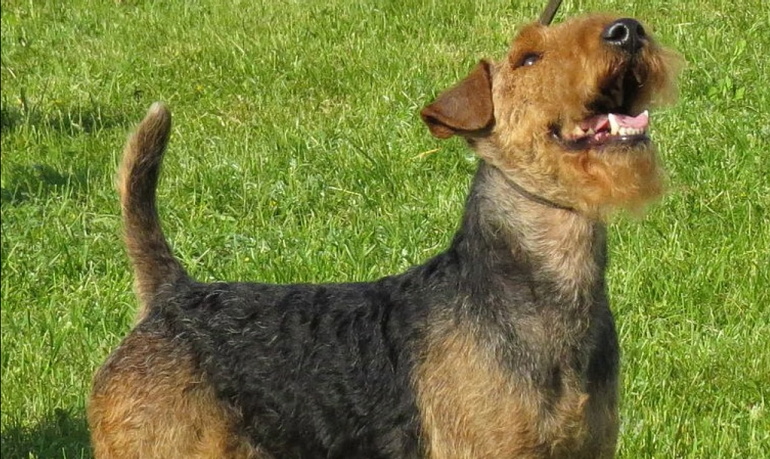
Health Problems In Welsh Terriers
Welsh terriers are a healthy breed with very few health problems. They have an average life span of 12-14 years, yet some dogs may live up to 18 years.
Although considered very healthy, they are prone to some health conditions like all other dogs. The American kennel club recommends buying from responsible breeders who screen their stock for possible health issues such as hip dysplasia, Legge calve perthes disease, and some allergies.
National Breed Club recommends health tests for Primary lens luxation (PLL).
Like most breeds, they suffer from these problems in old age. It is always good to be informed so that you can take prompt action when needed. Regular vet visits are always recommended.
Here we explain some possible diseases you have to watch out for.
1. Primary Lens Luxation (PLL)
PLL is an eye disorder that typically appears in middle age. The condition is hereditary that can be passed down from parents. In this disease, the lens of the eyes luxate, which means that they dislocate.
This causes swelling and dryness in the tissues of the eye which can be very painful for the pooch. It can eventually cause blindness.
2. Glaucoma
It is also a condition of the eye that can cause blindness in its severity. Due to improper drainage, the tissues of the eyes have abnormally high pressure. It can be very painful and the eye appears teary, red, and swollen. You may also see a cloudy appearance in the eye.
Although it may be inherited, it can also result from environmental factors, an injury, or an underlying health condition such as a tumor.
3. Hip Dysplasia
Although they have a risk factor for this condition, it is rare and mild. The reason is that welsh terriers are smaller dog breeds with less pressure on the hip bones. Even then, screening tests should be done for all dogs.
4. Allergies
Allergies are common in these pups. The most common are food allergies where dogs are allergic to ingredients in their food. Food allergies can be controlled through elimination diets.
They can be caused by coming in contact with allergens through bedding or toys etc. Or they can be inhalant, caused by pollen, mildew, or dust.
Typical symptoms of allergy are redness or patches on the skin. Itchiness and spots are also common.
5. Epilepsy
The Welsh terrier dog breed is also susceptible to neurological conditions such as epilepsy. Common symptoms are seizures that can be identified as frantic behavior-running around abnormally.
There can be incidences where the dog goes unconscious or its legs get stiff. It is frightening to watch but when caught early, it can be controlled to a great extent.
Exercise
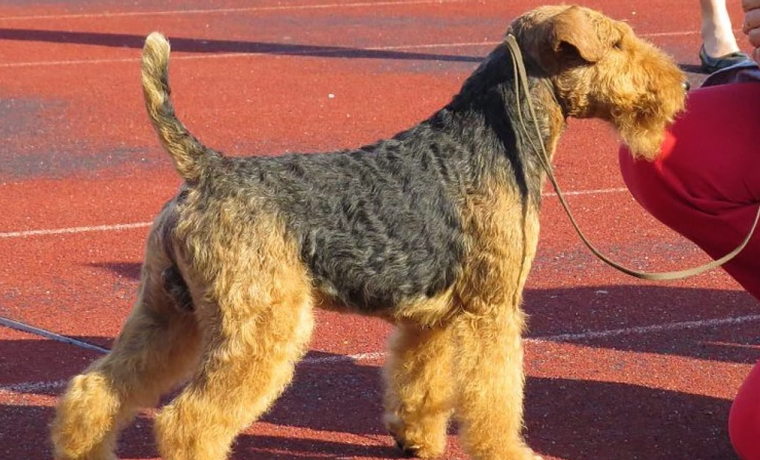
As explained before, welsh terrier puppies are full of energy. Letting them alone in the yard run around is not going to provide enough exercise. These canines should get at least 60 to 90 minutes of vigorous exercise.
Their typical terrier nature is a good enough reason to keep them on their toes. They need daily exercise in the form of play. You can take them on a long walk or to a nearby park, but make sure your welsh terrier is trained to be dog friendly. Otherwise, they may indulge in fights with other dogs.
Engaging them in dog sports is also a great outlet for their energy. You can try rally, barn hunt, and flyball.
Exercise and playtime are necessary to improve behavior. If these needs are not met, they will develop negative behavior due to boredom.
Your dog will surely stay happy in a healthy home that provides lots of opportunities to explore and play.
Grooming
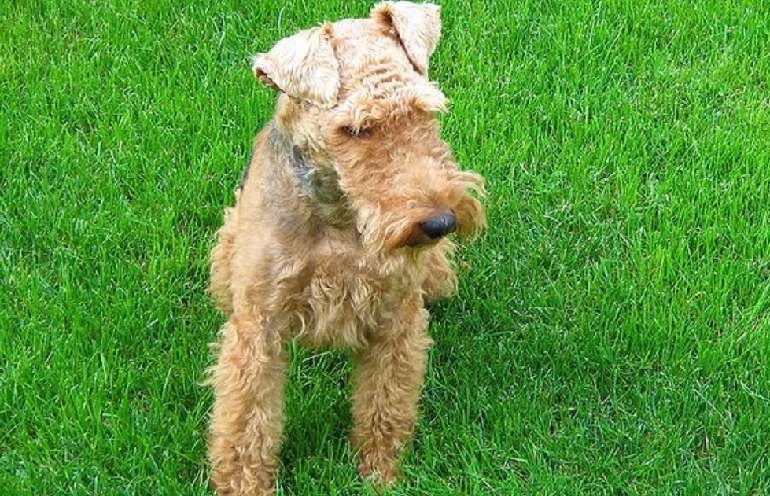
The Welsh terrier has a stunning double coat. It is thick and wired which makes it waterproof. The shedding is minimal which makes grooming much easier.
They require thorough combing once a week. The dead hair is trapped inside and doesn’t fall out. Their regular grooming sessions should involve hand stripping which is a technique to pull out unruly hair with your hands. If you are too intimidated to do it yourself, learning it from a professional dog groomer is a great idea.
They require a bath only when they have been in the mud or are dirty. Otherwise, giving a bath twice or thrice a year will suffice.
Make sure regular nail trimming is done either by yourself or by a professional. Nails have blood vessels inside, you should be careful to not cut through to avoid pain.
Brush your dog’s teeth twice a week to remove tartar and bacteria buildup. Also, regularly check your dog’s ears for redness, odor, or other signs of infection.
As with other habits, start grooming practices from a young age. Hold their paws and check them thoroughly for early training.
Welsh Terrier Diet
Just like other dogs, a welsh terrier’s diet depends upon its age and size. For an adult welsh terrier, give 3/4 to 1 cup of high-quality dog food in a day.
It is advised to give food in portions instead of laying it out at all times. The diet should be rich in protein and fiber and well-balanced to avoid excess weight gain.
Welsh Terrier Training
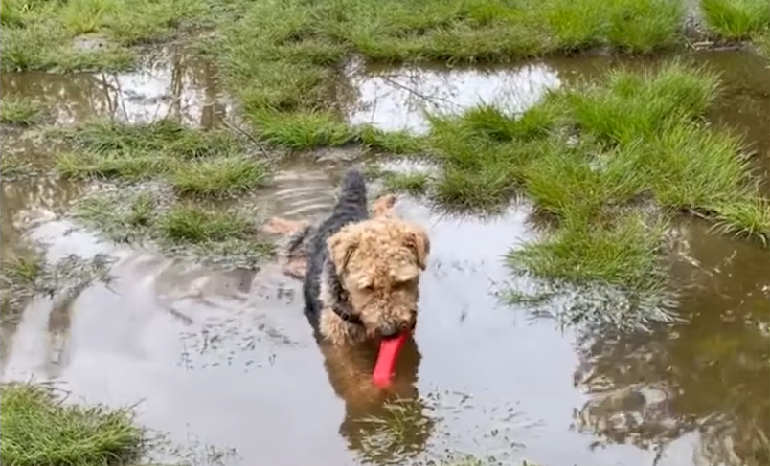
This intelligent dog breed can be difficult to train. They have a mind of their own and do not take well to instructions. If you are taking the training task on your shoulders, get ready with lots of patience and treats in your pocket.
But don’t worry, as they are highly intelligent, your persistent training efforts will eventually pay off.
Make sure you keep your training sessions short. A welsh terrier can get easily distracted by sounds and may lose interest quickly. Here’s a tip: Start your sessions after exercise so that your dog is less alert.
A welsh terrier is prone to dog-to-dog aggression. They need to be introduced to older mature dogs first who won’t be as eager to start a brawl. Eventually, you can introduce them to other dogs as well.
Obedience training is needed to keep them from going after other animals. Some owners have been successful in training them to live with cats, but we won’t give you any false hope.
They also need to be trained for alert barking. As they bark a lot, they should be taught when it is necessary to bark and when not.
Although they are generally friendly, puppies should be given lots of human interaction to get them used to strangers and mellow down any aggression they may have.
Conclusion
The Welsh terrier dogs are the calmest among all terriers. Although stubborn and strong-willed, they are friendly dogs with a massive character. They make great family pets that require lots of exercises and mental stimulation to stay happy.
As the Welsh terrier was bred to hunt small animals like badgers and vermin, it has a pretty high prey drive. A welshie is easily distracted by sights and sounds. Expect it to chase around any small object that moves.
Given its nature, a Welsh terrier is hard to train but you can achieve somewhat desired behavior with lots of positive reinforcement.
They are healthy dogs that have a high life expectancy and do well with general care. Their stunning black and tan coat is hypoallergenic and easy to maintain.
If you plan to buy a welsh terrier, make sure you find a reputable breeder. Once you have the dog, your house will be filled with happiness as this energy ball will keep you and your family entertained at all times!












